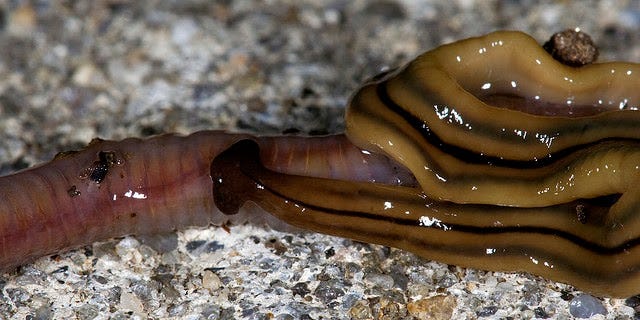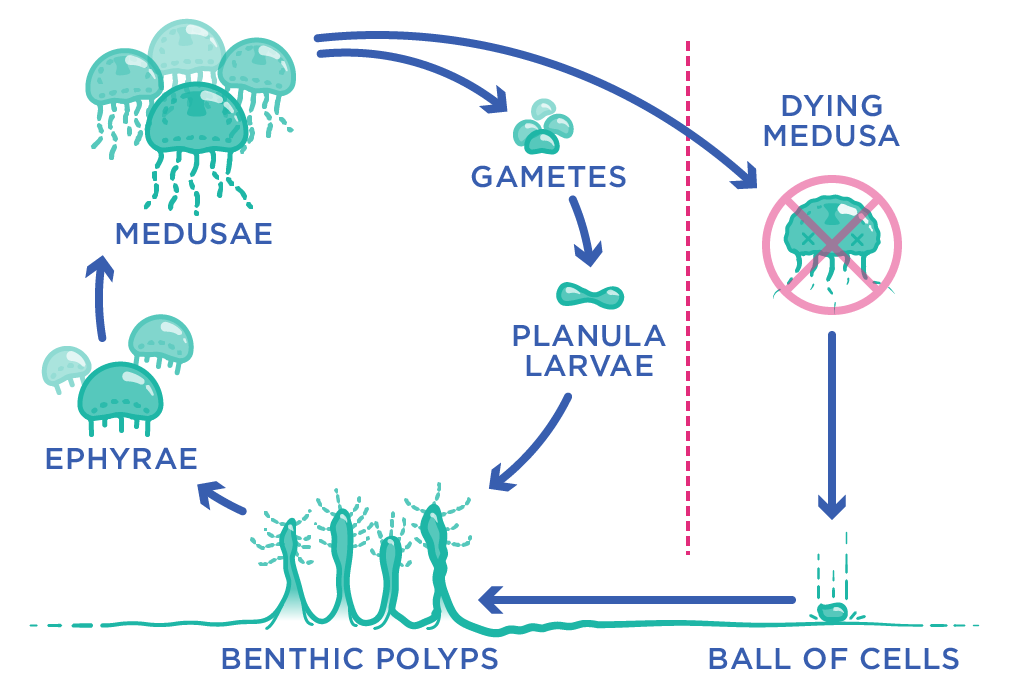What do shovel-headed worms have in common with Dracula?
Welcome to Natural Wonders, where we learn about weird and fascinating elements of nature. If you’re new, check out the archives, and if you were forwarded this newsletter, you can subscribe below:
It’s Fall! Which, along with being my personal favorite time of year, is also when many countries celebrate scary creatures and over-consumption of candy during the Halloween holiday.
In acknowledgement of the season, I’m going to spend October sharing some information on a few creepy creatures of nature. Today’s creature comes courtesy of my friend Beth, who, in caring for her horses, came across this under the watering trough:
Is it a snake? Is it a worm? Is it dangerous? Here’s a clearer picture of what its head looks like:

This, friends, is the invasive shovel-headed garden worm, a species that comes from Asia but has traveled to most everywhere on the globe by hitchhiking in the soil of greenhouse plants. It’s a particularly pernicious creature because it kills earthworms, the helpful soil-consumers of our gardens.
To kill the earthworm, it wraps itself around the worm and exudes a toxic slime that pretty much liquifies its prey.

This video shows a short clip of the process, though I’ll warn you it’s gross and will make you feel sorry for the earthworm:
Because of the toxic slime coating their bodies, they can be dangerous for humans to pick up or for pets to ingest. If you do find these foot-long creatures in your yard, you really should try to get rid of them before you’re faced with an invasion. But you can’t just squish them or slice them up, because each “piece” of worm will grow a head and regenerate into a new worm. Cut it up into three pieces and you’ve just created three new shovel-headed worms.
They are basically immortal.
As hermaphrodites, they can lay eggs that are already fertilized, but they usually reproduce asexually by simply breaking off their rear section to create another worm.

They have no known predators because other animals have learned to avoid their toxic, slimy bodies.
There really are no redeeming qualities of shovel-headed worms, so if you find them you’re urged to get rid of them. The best way to do this is to don gloves and put them into a Ziploc bag of salt, then put that in the freezer. If you are infested with them, you can spray your soil with boric acid, which deters them since they don’t like acidic soil. However, some plants don’t like that soil either, so it may affect what you’re able to grow.
So, how is a shovel-headed worm like Dracula?
Well, the worms aren’t blood-sucking creatures with sharpened canines, but they are sensitive to light and thus generally come out only at night and lurk in dark places. But their biggest similarity to vampires is their immortality – unless they receive a “stake to the heart” by being dropped in a bag of salt, one shovel-headed worm will live on and on by simply breaking off its back half to create a new worm. In this way, a worm could reproduce itself for hundreds, perhaps thousands, of years.
Immortality is, understandably, a rare phenomenon in the natural world. Several species of flatworms (of which the shovel-head is one) are considered immortal as are amoebas, which simply divide in half to reproduce. There’s a rumor on the internet that lobsters are immortal, but they simply live for a long time (50-75 years if left alone) before eventually succumbing to the same ailments of old age as the rest of us if they’re not eaten by predators first.
The only other possibly immortal animal is the jellyfish Turritopsis dohrnii, which can revert to a previous stage of life when faced with starvation or injury. In the lifecycle illustration below, the adult jellyfish (called a medusa) shrinks itself into a ball of cells that drops to the ocean floor and regenerates into the polyps that become a new jellyfish. This would be like a full-grown frog turning back into a tadpole to get a do-over on its entire life.

This jellyfish (and only this one) can repeat this process as many times as it likes. As you might imagine, scientists are scrambling to figure out how they do it in an effort to help us humans live longer. Like Dracula.
Next week… Zombie bugs!
Weird Nature:
If you liked this issue, please click the “like” button below - it makes me happy and also raises the profile of this newsletter!






